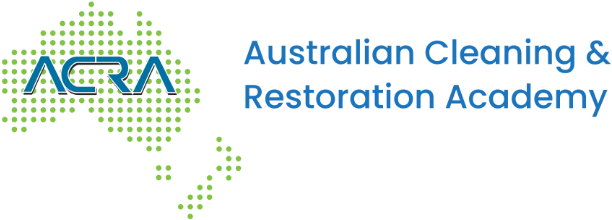Job Documentation That Tells the Full Story
How to Build a Claim-Proof File from Day One
If you've worked in cleaning and restoration for more than five minutes, you've already heard the phrase: "Make sure you document everything." And while most technicians and business owners understand the importance of photos and moisture readings, strong documentation goes far beyond snapping a few pics and jotting down vague notes.
In today’s restoration landscape, where insurance companies demand accuracy, clients expect transparency, and every job could turn into a dispute if not properly recorded, good documentation isn’t optional. It’s essential. That’s why training your team to document like pros is one of the smartest investments you can make.
Why Documentation Is Critical in Restoration
Solid job documentation protects your business. It builds trust with clients, justifies your scope of works to insurers, and gives your team a clear roadmap throughout the job lifecycle.
No matter what area of restoration you are dealing with, water damage restoration, mould remediation, or structural drying, great documentation:
Shows what conditions were present on arrival.
Proves the work you did was necessary and performed correctly.
Helps avoid payment delays or claim rejections.
Reduces liability by tracking decisions and actions.
Simplifies internal handovers between techs and shifts.
What Good Documentation Looks Like
So, what separates "average" documentation from a claim-proof file? It's all about telling the story clearly from start to finish:
Daily Job Notes: Date, time, technician name, site observations, actions taken, and any communication with the client or insurer.
Daily Video Updates: Using videos each day with verbal explanations of actions taken, justification and observations.
Moisture Readings: Accurate readings with dry standard references. Clearly indicate whether it’s a % reading or comparative.
Photo Evidence: Before, during, and after photos. Always caption them. Don't just take a photo of a wet carpet—explain what the viewer is looking at and why it's significant.
Video Walkthroughs: Quick clips with verbal explanations. Ideal for showing source tracking, migration paths, or justifying why materials were removed.
Equipment Logs: Type, serial numbers, placement, rationale, runtime.
Signed Documentation: Work authorisation, equipment acknowledgement, completion sign-off.
If someone outside your business (like an insurer or claims adjuster) picked up your file, would it clearly show what happened, why you did what you did, and how the outcome was reached? That’s the gold standard.
Why Photos and Videos Are Not Enough
Photos can lie. Or at least, they can be misunderstood.
A picture of a wall doesn’t explain whether it's dry, or if it was tested. A moisture meter reading photo without context might raise more questions than it answers.
That’s why your team must go beyond just visual evidence:
Train them to narrate videos: "This is the eastern wall of the master bedroom. The moisture meter is reading high at X, likely due to water migration from the ensuite leak."
Caption every photo: Who, what, where, when, why?
Match media to written notes. Visuals should support the story, not replace it.
Training Techs to Tell the Story
Here’s the truth: Documentation is a learned skill.
Some techs are naturals. Others need guidance. That’s where consistent training comes in. Here’s what to focus on:
Writing Clear Notes: Stick to facts. Avoid jargon unless explained. Be concise but detailed.
Using the Right Terms: Teach the difference between vapour pressure vs relative humidity, or comparative vs % moisture readings.
Understanding the Why: Techs need to know why actions are taken—it’s what lets them explain it properly.
Daily Habits: Train techs to document daily, not just at job start and finish.
Shadowing & Peer Review: Have experienced techs review newer team members’ files.
Mock Jobs: Use training jobs as a safe way to practise documentation end-to-end.
Building a Claim-Proof File from Day One
Documentation shouldn’t start once the job is halfway through. Build the file as you go:
Pre-Job:
Document the initial call.
Log client concerns and expectations.
Capture pre-existing damage.
Video walk through of job prior to works commencing with verbal explanation of what has occurred and what is required to achieve job completion to hand back to client.
During the Job:
Daily moisture readings and site updates.
Client interactions and changes in scope.
Equipment movement or changes.
Regular video updates with verbal explanations and commentary that cannot be disputed after the fact.
Wrap-Up:
Final photos and readings.
Final walk through video explaining the job in full beginning to end with actions taken and results achieved.
Client sign-off.
Recommendations for future monitoring or remediation.
Digital tools like job management software or apps can streamline the process and prevent lost data.
Good documentation doesn’t have to be time-consuming or complex. With the right training, tools, and team habits, you can create job files that protect your business, speed up claims, and prove your professionalism. Using videos throughout the job with verbal explanations can be your biggest asset as it leaves no room to interpret what has occurred on the job and allows you to give clear justification on actions taken.
Because at the end of the day, it’s not just about what you did—it’s about being able to show why you did it, how, and what the results were.
Want help levelling up your team's documentation game? Explore ACRA's training options and find the solution that suits your business.
